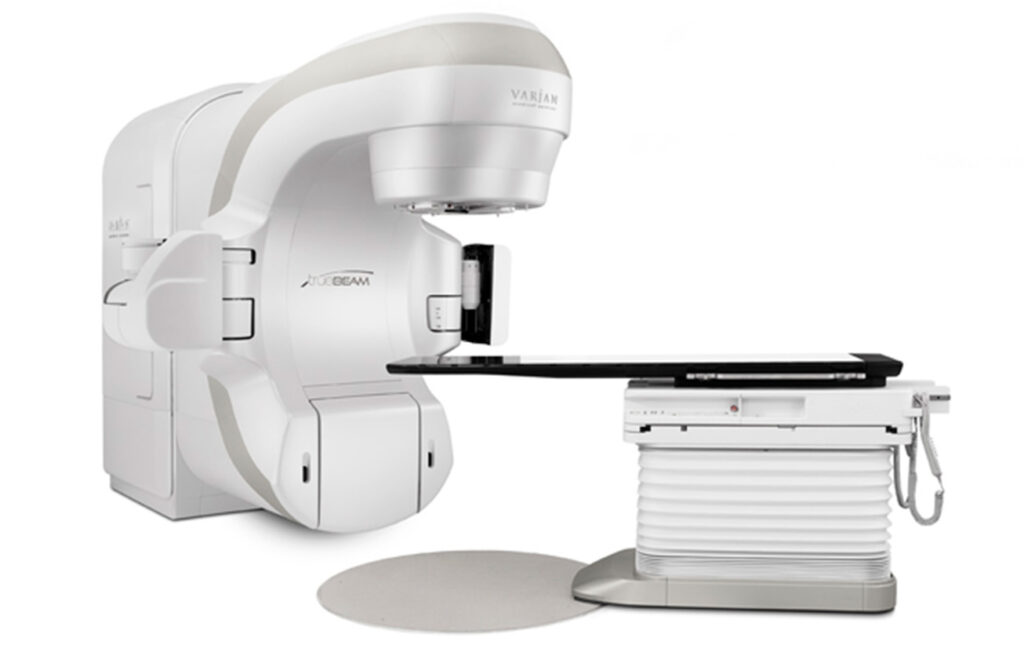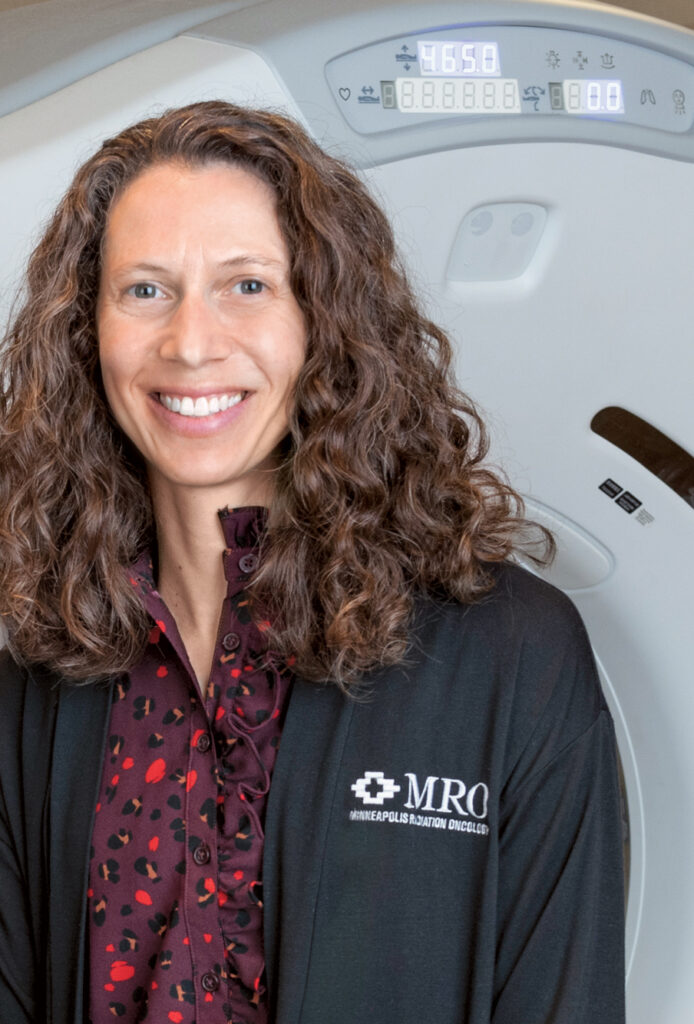Radiation is an effective way to treat many different types of cancer, in almost any part of the body. At least half of all people treated for cancer receive radiation therapy and the number of patients cured rises every day.

External beam radiation therapy (conventional or stereotactic radiation therapy) delivers high energy x-rays from outside the body by a machine called a linear accelerator (LINAC) that produces high-energy x-rays, which are conformed to the exact shape of a patient’s tumor. This three-dimensional accuracy results in the ability to treat with fewer potential side effects.
The specialists at Minneapolis Radiation Oncology use a LINAC with advanced imaging techniques and robotic systems to deliver precise, highly effective cancer treatments, such as Stereotactic Radiosurgery (SRS) and Stereotactic Radiotherapy (SBRT).

Sarah Way, MS, DABR®
MRO | North Memorial
SRS delivers radiation treatments to the brain or spine, generally in one dose, accurate to within one to two millimeters. Sarah Way, a board-certified Medical Physicist at MRO North Memorial, explains, “SRS is a very precise form of radiotherapy for patients with certain types of brain tumors or disorders.”
SBRT delivers precisely focused radiation beams to tumors within the body, such as prostate cancer or lung cancer. It’s usually given 3-5 times over a couple of weeks.
Today, advanced imaging technologies have made SRS and SBRT radiation therapy even more precise and consistent. Three-dimensional imaging, such as computer tomography (CT), magnetic resonance imaging (MRI), and positron emission tomography (PET), is used to locate a tumor and define its exact size and shape.
As MRO Medical Physicist, Sarah Way, says, “Using these advanced imaging and computer guiding systems, we can deliver high doses of radiotherapy with surgical precision in a non-invasive method, making treatment much more comfortable for our patients.”
What is radiation therapy? Learn more…

